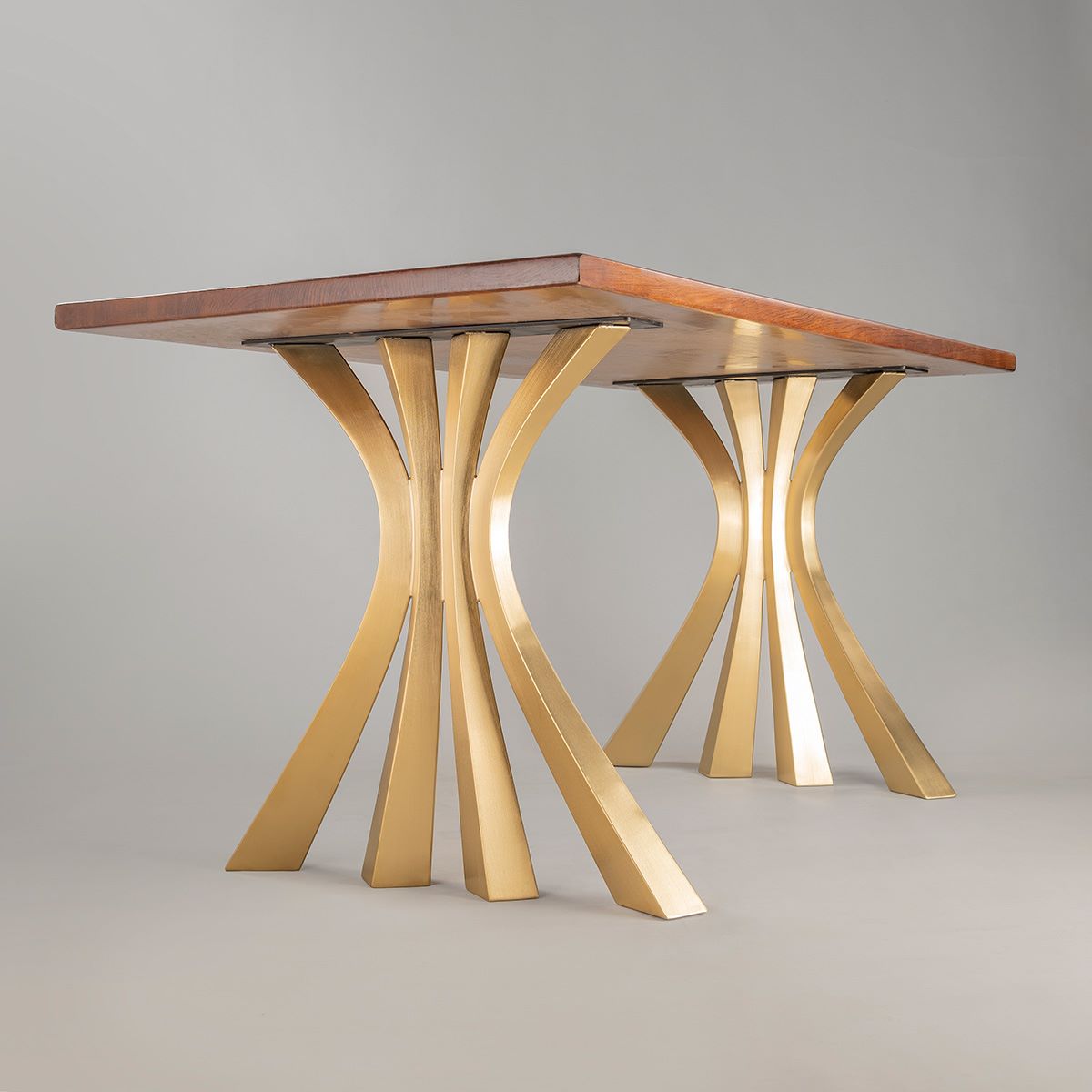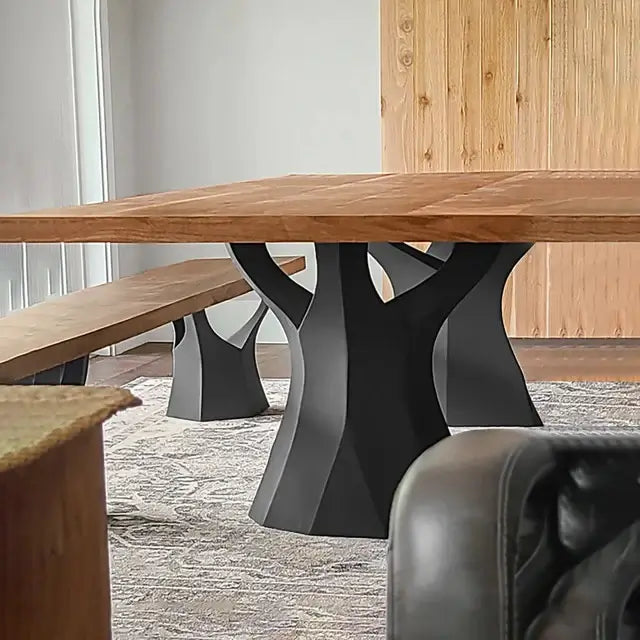Discover Affordable Beauty in High-Quality Dining Table Legs Wood
Discover Affordable Beauty in High-Quality Dining Table Legs Wood
Blog Article
Key Variables to Keep in Mind for Dining Table Legs Timber Choices
When picking wood for dining table legs, several essential elements warrant mindful consideration to guarantee both capability and aesthetic allure. The choice of timber kind, defined by its longevity and one-of-a-kind grain patterns, plays an essential duty in the total style and durability of the piece.
Wood Types and Qualities
When selecting timber for dining table legs, it is important to recognize the distinct features of various wood types. Different woods supply distinct benefits and drawbacks, affecting both the toughness and visual appeal of the finished item.
Oak, recognized for its outstanding toughness, additionally features a prominent grain that can add personality to the table. Cherry wood, with its rich shade that grows over time, provides a lavish appearance yet may call for even more upkeep to avoid scrapes.
On the other hand, softwoods like pine and fir are extra cost effective and simpler to deal with, yet they are much less durable than woods. Pine is lightweight and includes a warm, rustic look, making it a popular option for laid-back dining settings. Nonetheless, it is more at risk to damages and scratches.
Comprehending these characteristics will assist in making an educated choice to make certain the legs of the table meet both visual and practical needs.
Grain Patterns and Looks
The timber's grain is not merely an aesthetic characteristic; it imparts an one-of-a-kind personality and appeal to each item. Different timber types exhibit unique grain patterns, ranging from the straight lines of maple to the intricate swirls of oak and the striking number of walnut.
Furthermore, the orientation and scale of the grain can affect the regarded size and style of the table. Larger, a lot more obvious grains might lend a vibrant, dramatic effect, while finer, subtler grains can create an improved, underrated look. Additionally, the finishing process can even more enhance these patterns, emphasizing the all-natural elegance of the timber and highlighting rich shades.
Eventually, the selection of grain pattern should integrate with various other design aspects, such as the table top and surrounding furnishings, guaranteeing a cohesive aesthetic that boosts the dining experience. Thoughtful option of timber grain not just adds to the table's beauty however likewise reflects the proprietor's preference and style.
Durability and Stamina
The longevity and toughness of table legs are extremely important considerations for making certain longevity and security in any kind of dining space. Selecting the ideal timber is crucial, as various types show differing degrees of resilience. Hardwoods such as oak, cherry, and maple are often chosen for their fundamental toughness and resistance to wear. These materials not just withstand day-to-day use yet likewise sustain heavy lots, making them ideal for dining tables that regularly suit several diners. Dining Table Legs Wood.

Ultimately, spending in high-grade timber and robust building and construction techniques will certainly yield a table that stands the examination of time, while offering a reputable structure for many dishes shared among friends and family. Focusing on resilience and strength makes certain that your dining table remains functional and cosmetically pleasing for many years to come.
Maintenance and Care
Correct upkeep and care are vital for protecting the resilience and stamina of table legs made from wood. Routine cleaning is vital; utilizing a soft, damp fabric makes sure that dust and debris do not gather, which can bring about scrapes and dullness. It is recommended to stay clear of severe chemicals or unpleasant materials that could damage the finish.
Additionally, applying an appropriate timber gloss or wax periodically can help keep the shine and secure the wood from moisture and spills. It is important to follow the producer's suggestions concerning the type of product to utilize, as certain coatings may react detrimentally to details chemicals.
Moisture and temperature level fluctuations can also affect wood table legs, causing them to warp or split. It's ideal to position the table away from straight sunlight and warm sources. If the table legs have any dents or scratches, attending to these without delay can prevent more damage.
Last but not least, regularly checking the joints and screws for rigidity is very important to preserve architectural stability (Dining Table Legs Wood). By adhering to these upkeep practices, property owners can ensure their wood table legs continue to be appealing and practical for years to find
Ecological Factors To Consider
When selecting timber for eating table legs, it's necessary to take ecological considerations right into account. The sourcing weblink and sustainability of wood are paramount in minimizing environmental impact. Deciding for wood from qualified resources, such as those endorsed by the Woodland Stewardship Council (FSC), makes certain that the timber is collected sensibly, advertising forest preservation and biodiversity.

Moreover, regional sourcing of timber minimizes transportation emissions, sustaining local economies while minimizing ecological impact. It is likewise advisable to be aware of the wood's treatment and ending up processes, as certain chemicals can be unsafe to both human health and the setting. By focusing on sustainable timber options, consumers can add to environmental preservation while enjoying the toughness and appeal of their dining table legs.
Conclusion
In verdict, selecting timber for dining table legs demands careful factor to consider of different factors, including timber kinds, more helpful hints grain patterns, and sturdiness. Upkeep demands and ecological sustainability more influence timber options, stressing the importance of sourcing from accredited or reclaimed products.
When picking wood for dining table legs, numerous important factors require mindful consideration to make sure both functionality and aesthetic charm.Correct maintenance and care are crucial for maintaining the resilience and toughness of dining table legs made from wood.When choosing timber for dining table legs, it's essential to take environmental considerations into account. By focusing on lasting wood selections, customers can add to ecological conservation while appreciating the sturdiness and appeal of their dining table legs.
In verdict, selecting timber for eating table legs demands careful consideration of various elements, including timber kinds, grain patterns, and resilience. Dining Table Legs Wood.
Report this page